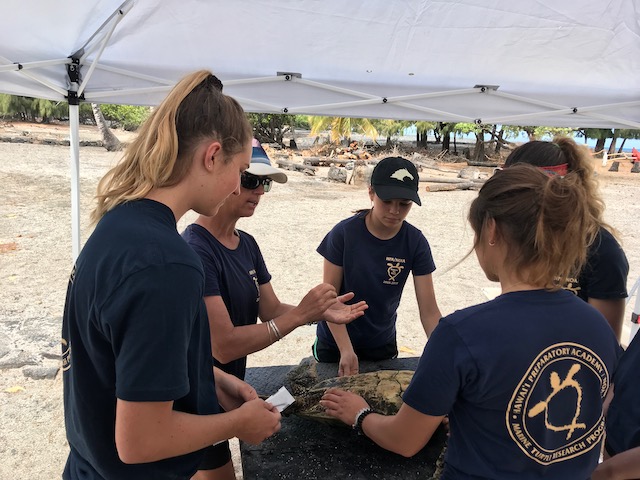BACKGROUND
Unlike mammals, a sea turtles sex (male/female) is determined by the temperature at which they incubate. There is a "pivotal temperature" (~29
degrees C) above which the developing embryos will tend to become females and below which they will tend to become males (figure below).
Since turtles lay their eggs in sandy pits on the beaches, the incubation temperature depends on exposure to sunlight, depth of nest and general overall climate. In some areas the incubation temperatures are such that the ratio of males to females is about 50/50 and on other warmer beaches, more females are produced or on cooler beaches a higher ratio of males are produced.
CLIMATE CHANGE
As our climate changes as a result of "global warming", the incubation temperatures of sea turtle nests is increasing which leads to a higher ratio of female than males hatching on our nesting beaches. In turn, this unbalanced ratio could lead to "feminization" of the population and decrease the chances of females being able to find a mate. With fewer males, there would also be less genetic variation.
While this is a possible outcome of global warming, we want to be able to see if this is the case and the only way to do that is to count the numbers of females and males being produced. Since nesting beaches are scattered around the world and / or are difficult to get to, it is not practical to try and determine the sex ratio of hatchlings. In addition, it is not easy to determine the sex of a turtle until it is mature and develops secondary sexual characteristic (long tail in the males, for example)
In Hawaii, 94% of green turtles nest at French Frigate Shoals (FFS) in the Northwestern Hawaiian Islands. This is a highly protected and remote atoll about 500 miles noRth of Honolulu, Hawaii. Determining the sex ratio of turtles being produced on the nesting beaches of FFS would be very difficult and, as an alternative way to determine the sex ratio of turtles being produced at FFS, we can look at the young juveniles that recruit to the main hawaiian islands at 3-5 years of age b0%ecause we know that most of the (over 90%) were hatched at FFS.
There are several ways to determine the sex of a sea turtle: 1. look inside at the gonads to see if there are ovaries or Testes, 2. take a blood sample and analyze it for hormone levels (testosterone vs estrogen) and 3. wait until they reach maturity. The first alternative is too invasive for the animal and the last takes too long (25+ years). Consequently, we will use the second method and analyze blood samples for male and female hormone levels. Using this technique, we will be able to determine the sex of a broad range of size classes of sea turtles and begin to develop a picture of the sex ratio in past years. For example, a 55 cm sea turtle may be on the order of 15 years old and, hence, is a member of the turtles that hatched that long ago,,, perhaps in 2004. This will allow us to determine the sex ratio that was produced over the last 20-25 years to present (the youngest/smallest turtles).
The Project
The project to determine the sex ratios of the green turtle population in Hawaii begins with the gathering of blood samples from juvenile and subadult green turtles in various habitats on all of the islands (in order to get a true picture). These samples will be analyzed to determine the level of testosterone and label each turtle as a male or female. Over time, with the accumulation of many samples from many islands, we will be able to determine the sex ratio of the Hawaii green turtle population over the last 20+ years and develop a picture of the potential impact of climate change on the sex ratio. This is a long term/ongoing project that will continue for many years.




























